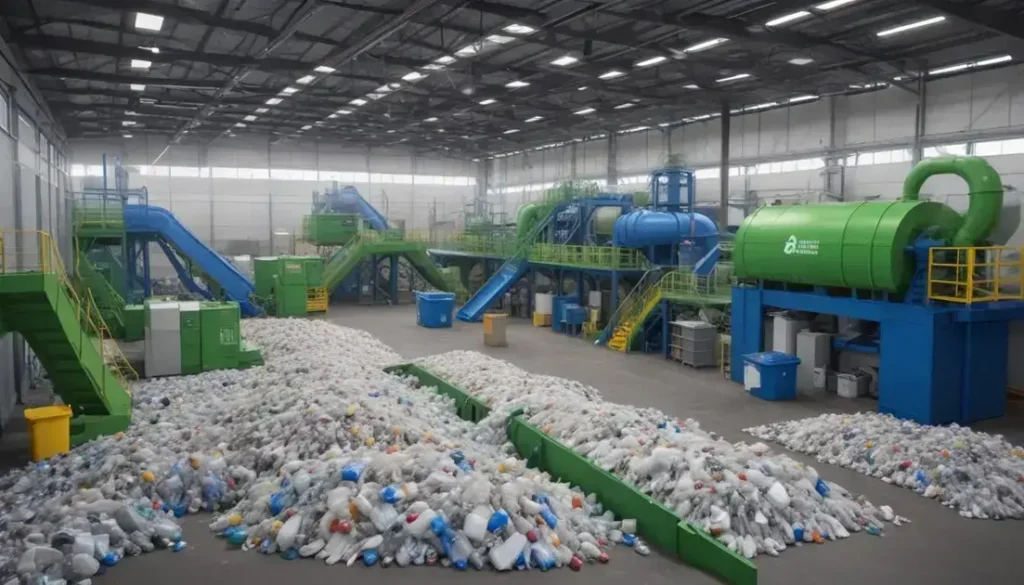Microsoft is committed to achieving carbon negativity and water positivity by 2030 while utilizing 100% renewable energy, demonstrating leadership in sustainability through innovative practices and collaboration with NGOs, along with a strong focus on STEM education to address environmental challenges.
Have you ever wondered how Microsoft is paving the way for sustainable technology? This article dives into their innovative approach to reducing emissions and creating a positive impact.
Overview of Microsoft’s Sustainability Efforts
Microsoft has long been a pioneer in adopting sustainable practices within the tech industry. Their commitment to environmental responsibility is evident through various initiatives, primarily aimed at reducing their carbon footprint. One notable effort is their pledge to be carbon negative by 2030. This ambitious goal not only reflects their dedication but also sets a benchmark for other companies in the sector.
Furthermore, Microsoft is investing heavily in renewable energy sources to power its data centers. This shift not only lowers emissions but also promotes the use of clean energy across the globe. The company has entered into agreements to purchase wind and solar energy, thus showcasing a strong commitment to sustainable energy solutions.
In addition, Microsoft is focusing on water conservation, aiming to become water positive by 2030. This involves replenishing more water than they consume in their operations, thereby mitigating the effects of climate change on local water resources. Such comprehensive strategies underline Microsoft’s holistic approach to sustainability, encompassing various aspects of environmental stewardship.
Key Challenges in Reducing Emissions
Reducing emissions presents numerous challenges for companies worldwide, particularly in the tech sector. One significant hurdle is the reliance on traditional energy sources, which still dominate electricity generation. Transitioning to renewable energy requires substantial investment and infrastructure changes, which can be daunting for many businesses.
Another challenge is the complexity of measuring and reporting emissions accurately. Companies often struggle with data collection and transparency, leading to potential discrepancies in their sustainability reporting. Without precise metrics, it becomes challenging to set achievable goals and monitor progress effectively.
Additionally, ensuring that suppliers adhere to sustainable practices can be tough. Many companies are part of extensive supply chains, making it crucial to engage and educate suppliers about emission reduction strategies.
Collaboration and communication are vital to enforce these practices across the board.
Finally, regulatory pressures vary greatly by region, making compliance a complicated affair. Firms must navigate different laws and regulations while striving for a unified corporate sustainability strategy. These diverse challenges require a proactive approach, coupled with innovative solutions to pave the way for effective emission reduction.
Role of AI in Microsoft’s Strategy
The role of Artificial Intelligence (AI) in Microsoft’s strategy is pivotal to its sustainability efforts. By integrating AI into their operations, Microsoft enhances efficiency and accelerates the progress towards an eco-friendly future. AI tools help optimize resource consumption, reducing waste while maintaining productivity.
One key application is in data analysis. AI algorithms can process vast amounts of data to identify trends and inefficiencies in energy usage across Microsoft’s facilities. This insight allows the company to implement targeted strategies for reducing emissions. Through predictive analytics, Microsoft can forecast energy needs more accurately, leading to improved management of power consumption.
Moreover, AI supports innovation in product design, making software and hardware more energy-efficient. By embracing AI, Microsoft not only reduces its own environmental impact but also sets an example for other businesses to follow. The development of AI-driven applications further empowers organizations to monitor and reduce their carbon footprints, fostering a broader commitment to sustainability.
AI also plays a crucial role in Microsoft’s collaboration with various partners and stakeholders. By sharing AI technology, Microsoft enables its partners to adopt sustainable practices, amplifying the impact of their collective efforts to combat climate change.
Microsoft’s Carbon Negative Commitment
Microsoft’s Carbon Negative Commitment is a bold pledge aimed at addressing the urgent need for climate action. The company has promised to eliminate more carbon than it emits by the year 2030. This ambitious goal underscores Microsoft’s leadership role in promoting sustainability within the tech industry.
To achieve this commitment, Microsoft is implementing a multifaceted strategy. This includes investing in renewable energy sources, enhancing energy efficiency in its operations, and developing technologies that facilitate carbon capture. By transitioning to 100% renewable energy for its data centers, Microsoft significantly reduces its overall carbon footprint.
Moreover, the company invests in forest restoration and carbon offset projects worldwide. These initiatives not only contribute to carbon capture but also promote biodiversity and ecosystem resilience. By collaborating with various stakeholders, Microsoft amplifies its impact and drives collective action in the fight against climate change.
Accountability and transparency are also pivotal to Microsoft’s commitment. The company has established rigorous methodologies to measure its carbon emissions and offsets, ensuring stakeholders can track progress effectively. Emphasizing innovation, Microsoft encourages the development of new technologies that can further reduce carbon output across various sectors.
Water Positive Initiatives by Microsoft
Microsoft’s commitment to becoming water positive by 2030 is a crucial aspect of its broader sustainability strategy. This initiative aims to replenish more water than the company consumes across its global operations. By addressing water scarcity, Microsoft seeks to mitigate the impacts of climate change and ensure that local ecosystems thrive.
To achieve this ambitious goal, Microsoft is implementing various strategies. One key approach is investing in water conservation projects in regions where it operates. By supporting local initiatives that enhance water efficiency, Microsoft can help communities improve their water management practices.
Additionally, Microsoft is leveraging technology to monitor and manage water usage efficiently. Smart sensors and AI-driven analytics provide insights into consumption patterns, allowing for better decision-making regarding water allocation. This data-driven approach helps identify areas for improvement and, ultimately, reduces water wastage.
Furthermore, collaborations with non-profits and community organizations are essential to Microsoft’s water positive strategy. These partnerships enhance the effectiveness of conservation projects and foster sustainable practices at a grassroots level. By engaging with local stakeholders, Microsoft amplifies its impact and promotes a shared commitment to water sustainability.
Impact on Indian Exporters
The impact of sustainability initiatives by Microsoft on Indian exporters is increasingly significant as these businesses adapt to global trade regulations. Companies need to ensure their products meet the rising demand for environmentally friendly practices. Microsoft’s leadership in sustainability encourages Indian exporters to adopt similar measures, thereby enhancing their global competitiveness.
As Microsoft commits to becoming carbon negative and water positive, it sets a paradigm that influences Indian firms. These exporters must assess their supply chains and implement efficient practices to reduce emissions and conserve resources. By aligning with Microsoft’s values, Indian exporters can improve their brand image and appeal to environmentally conscious consumers.
Moreover, Indian exporters can leverage Microsoft’s technological solutions to optimize their operations. AI and data analytics offer valuable insights for improving efficiency, reducing waste, and tracking sustainability metrics. This integration not only boosts productivity but also positions these exporters favorably in international markets where sustainability is a crucial factor for buyers.
Collaboration initiatives between Microsoft and local businesses can further facilitate knowledge transfer. Workshops and training sessions focused on sustainable practices equip Indian exporters with the tools needed to thrive in an eco-conscious market.
Sustainability Challenges in Tech Industry
The tech industry faces numerous sustainability challenges that impede its progress towards greener operations. One of the primary issues is the significant energy consumption associated with data centers and IT infrastructure. These facilities require vast amounts of power for operations and cooling, leading to substantial carbon emissions.
Another challenge lies in e-waste management. As technology evolves rapidly, outdated hardware contributes to increasing waste levels. Many electronic devices contain harmful materials, and improper disposal can have detrimental environmental impacts. Companies in the tech sector must prioritize recycling and responsible disposal practices to mitigate this issue.
Supply chain sustainability further complicates efforts within the industry. Many tech companies rely on global supply chains, making it difficult to ensure that all suppliers adhere to environmental standards. Establishing transparency and accountability in these supply chains is essential for effective sustainability measures.
Additionally, the rapid pace of innovation often leads to a lack of comprehensive sustainability strategies. Companies may prioritize short-term gains over long-term environmental commitments. Implementing robust sustainability frameworks that integrate technological advancements is crucial for driving sustainable growth in the tech industry.
Microsoft’s Circular Economy Approach
Microsoft’s approach to the circular economy is a transformative strategy aimed at minimizing waste and maximizing resource efficiency. By rethinking product design and lifecycle, Microsoft is committed to extending the longevity of its products and ensuring that materials are continually reused.
One significant aspect of this approach is the implementation of sustainable materials in product development. Microsoft emphasizes using recycled and recyclable materials, thereby reducing the environmental impact of its manufacturing processes. This initiative not only conserves resources but also fosters a market for sustainable products.
Additionally, Microsoft invests in product take-back programs. These initiatives encourage customers to return end-of-life devices, allowing the company to recycle components and reclaim materials. This process significantly decreases e-waste and helps build a more sustainable supply chain.
Microsoft’s commitment to circularity extends beyond its products. The company actively collaborates with partners, sharing best practices and innovations that promote circular economy principles across the tech industry. By advocating for collaborative solutions, Microsoft aims to influence a broader shift towards sustainability within the sector.
Collaboration with NGOs for Sustainability
Microsoft’s collaboration with NGOs plays a significant role in advancing sustainability initiatives around the globe. By partnering with non-governmental organizations, Microsoft leverages unique expertise and local knowledge to effectively address environmental challenges. These collaborations are vital in amplifying the impact of sustainability programs.
One of the key areas of focus is community engagement. NGOs often have established connections within local communities, making them ideal partners in educating and mobilizing efforts for sustainability. Microsoft works alongside these organizations to promote conservation, reduce waste, and encourage renewable energy practices at the grassroots level.
Additionally, these partnerships enable Microsoft to support various environmental projects. For instance, initiatives aimed at reforestation, water conservation, and wildlife protection benefit from NGO’s field experience and operational insights, ensuring that efforts are practical and culturally appropriate.
Through collaborative frameworks, Microsoft also advocates for policy changes that promote sustainability. By joining forces with NGOs, Microsoft can influence public policy, advocate for corporate responsibility, and create a broader awareness of sustainability issues. This synergistic approach emphasizes the importance of collective action in tackling complex environmental problems.
Renewable Energy Solutions and Data Centers
Microsoft’s commitment to renewable energy solutions is integral to its strategy for sustainable data centers. By transitioning to renewable energy sources like solar and wind power, Microsoft aims to significantly reduce its carbon footprint. This shift not only helps the environment but also optimizes the energy efficiency of their operations.
Data centers are critical components of Microsoft’s infrastructure, consuming large amounts of energy for computing and cooling. By investing in renewable energy, Microsoft not only ensures that its data centers operate sustainably but also sets a model for the tech industry. These data centers now utilize energy-efficient designs and smart technologies to manage power consumption.
Furthermore, Microsoft has committed to purchasing renewable energy certificates to offset energy usage in regions where clean energy sources are not yet available. This strategy ensures that all its data centers are powered by renewable energy, regardless of location. This approach helps to stimulate local renewable energy markets and promotes the adoption of clean energy across the globe.
Microsoft’s innovations in renewable energy solutions also extend to collaborations with energy providers and local governments. By working together, they can facilitate the development of infrastructure necessary for the wider adoption of renewable energy in data centers and beyond.
Importance of STEM in Sustainability
STEM education—encompassing Science, Technology, Engineering, and Mathematics—is crucial in addressing sustainability challenges. By fostering a strong foundation in these fields, STEM encourages innovative solutions to environmental issues. As the world faces climate change, resource depletion, and pollution, the need for skilled professionals in STEM disciplines becomes more evident.
One of the key roles of STEM is driving technological innovation. Advancements in technology provide tools to monitor and manage natural resources more effectively. Engineers and scientists work together to create sustainable materials, develop renewable energy systems, and invent processes that minimize waste. These innovations lead to a more sustainable future.
Furthermore, mathematics plays an integral part in analysing data related to environmental conditions. Statistical models help predict climate trends, while algorithms optimise resource allocation. This analytical approach is essential for making informed decisions that impact sustainability efforts.
Moreover, promoting STEM in education ensures a future workforce equipped to tackle environmental challenges. By engaging students in hands-on projects that address real-world problems, educators can inspire the next generation to pursue careers in fields that contribute to sustainability. This educational focus is vital for creating a more sustainable planet.
Future of Microsoft’s Sustainability Goals
The future of Microsoft’s sustainability goals is shaped by a commitment to innovation and accountability. As the company strives to become carbon negative by 2030, it sets the stage for a future where sustainability is deeply integrated into every facet of its operations. This ambitious goal not only aligns with global climate targets but also serves as a catalyst for change across the technology sector.
In addition to carbon neutrality, Microsoft is focused on enhancing its water positive initiatives. By replenishing more water than it consumes, the company aims to contribute positively to local ecosystems and address water scarcity issues that affect communities worldwide. This holistic approach exemplifies how big corporations can lead in creating sustainable business practices.
Furthermore, Microsoft is investing in advancements in renewable energy to power its data centers. By committing to use 100% renewable energy, Microsoft is paving the way for cleaner energy solutions and encouraging other companies to follow suit. This transition not only reduces emissions but also promotes the growth of renewable energy markets globally.
Collaboration and partnerships will also play a vital role in achieving these sustainability goals. By working with non-profits, governments, and other organizations, Microsoft aims to foster innovation and share best practices in sustainability, ultimately leading to a more sustainable future for everyone.
In Conclusion, the Path to a Sustainable Future
Microsoft’s commitment to sustainability highlights the importance of integrating eco-friendly practices into business operations. By focusing on becoming carbon negative and water positive, as well as embracing renewable energy, Microsoft sets a strong example for others to follow.
The collaboration with NGOs and investing in STEM education further reinforces the message that collective efforts are vital for addressing environmental challenges. As technology continues to evolve, it will play a crucial role in creating innovative solutions that contribute to a healthier planet.
Everyone can contribute to sustainability, from large corporations to individual consumers. By prioritizing sustainability, we can pave the way for a brighter and greener future for ourselves and generations to come.
Frequently Asked Questions (FAQs)
What are Microsoft’s key sustainability goals?
Microsoft aims to become carbon negative and water positive by 2030, along with using 100% renewable energy for its operations.
How does Microsoft collaborate with NGOs for sustainability?
Microsoft partners with NGOs to leverage local expertise, engage communities, and implement impactful environmental projects globally.
Why is STEM education important for sustainability?
STEM education fosters innovation and equips future professionals with the skills necessary to tackle environmental challenges effectively.
What role does technology play in Microsoft’s sustainability initiatives?
Technology helps Microsoft optimize resources, monitor energy consumption, and develop innovative solutions that contribute to sustainable practices.
How can individuals contribute to sustainability efforts?
Individuals can adopt eco-friendly habits, reduce waste, and support companies that prioritize sustainability in their operations.
Why is collaboration essential for achieving sustainability goals?
Collaboration enhances knowledge sharing, amplifies impact, and leads to comprehensive solutions that address complex environmental issues.


